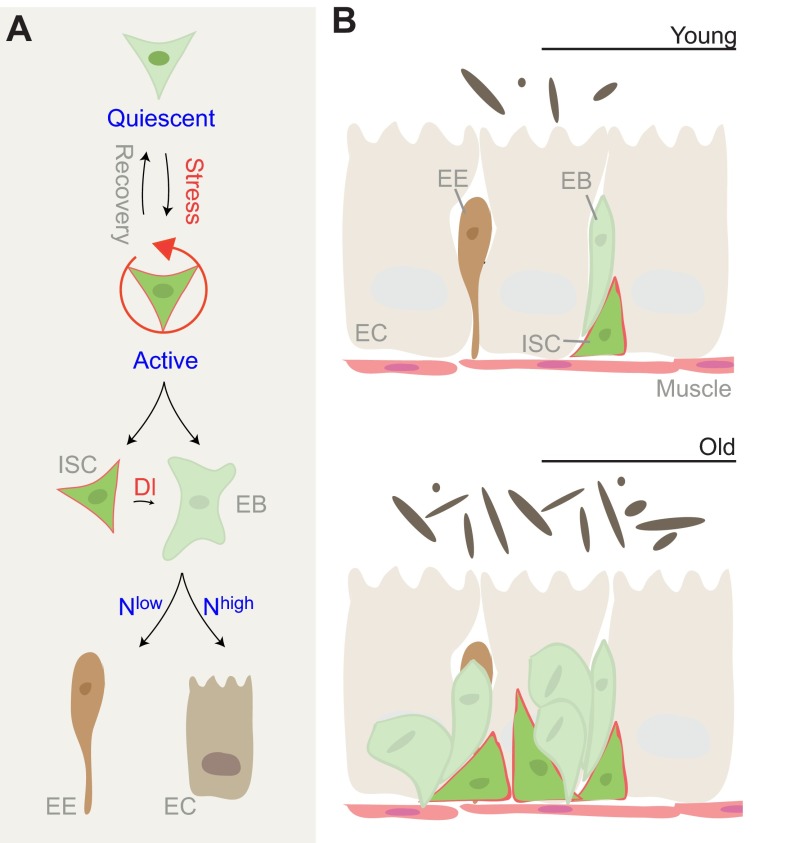Fig. 3.
Control of tissue regeneration in the Drosophila intestine. (A) The intestinal stem cell lineage in Drosophila. In response to stress, intestinal stem cells (ISCs) divide asymmetrically to give rise to a new ISC and an enteroblast (EB), which differentiates into either an enterocyte (EC) or an enteroendocrine cell (EE). Notch (N) signaling, initiated by a Delta (Dl) signal from the ISC, drives EB differentiation. Depending on the levels of N signaling, EBs differentiate into either EEs or ECs. (B) Age-related changes in homeostasis of the intestinal epithelium. In young animals, the epithelium consists of a monolayer of ECs with interspersed EEs and basally located ISCs. In aging flies, ISCs overproliferate, resulting in the accumulation of misdifferentiated EB-like cells that disrupt structure and function of the intestinal epithelium. This phenotype correlates with an expansion of the commensal bacterial population in the lumen (dark ovals).

